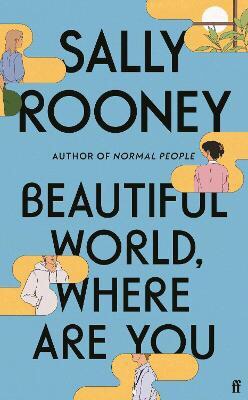Sally Rooney’s Beautiful World: when was it?
Sally Rooney’s Beautiful World, Where Are You? (2021) is an uneasy mixture: a romance and a novel of ideas. A novel of ideas, David Lodge wrote in The Art of Fiction, is “a book light on narrative interest, in which abnormally articulate characters bat philosophical questions back and forth between themselves, with brief intervals for eating, drinking and flirtation” (Penguin, 1992, p. 198), and that sounds quite close to this novel, or large parts of it.

Beautiful World‘s chapters helpfully alternate between those utilising third-person narration and those comprising letters between the two female protagonists, a writer named Alice and an editorial assistant named Eileen. The second category of chapter is home to the novel of ideas element. Perhaps the most central idea occupying the minds of the protagonists is that of living in a degenerate world, threatened with extinction:
I know we agree that civilisation is presently in its decadent declining phase, and that lurid ugliness is the predominant visual feature of modern life. (Eileen)
Faber, p. 207
Rooney’s characters are fatalistic about this idea. They don’t like the world they live in anyway. It’s ugly and built on oppression:
For me it feels like looking down and seeing for the first time that I’m standing on a minuscule ledge at a dizzying vertical height, and the only thing supporting my weight is the misery and degradation of almost everyone else on earth. (Eileen)
P. 38
Even if we were to ignore the oppressed millions, we in the world of material comfort have got it wrong in how we live together and apart:
[I]f we all stay alone and practise celibacy and carefully police our personal boundaries, many problems will be avoided, but it seems we will also have almost nothing left that makes life worthwhile. (Alice)
P. 186
With such zealous policing of personal boundaries, we are in a bad place, the titular Beautiful World nowhere to be seen. But if the world as it is is bad, what then is or could be good? Early on, the idea of conservatism is punctured by Alice:
[T]he idea of ‘conservatism’ is in itself false, because nothing can be conserved, as such – time moves in one direction only, I mean. […] We can’t conserve anything, and especially not social relations, without altering their nature, arresting some part of their interaction with time in an unnatural way. (Alice)
P. 16
This is not the novel’s final word on the matter, though, and a surprising facet of the book is the conservative locating of the Beautiful World in the past:
[M]odern living compares poorly with the old ways of life. (Eileen)
Or, more specifically:
[B]efore the 1970s, people wore durable clothes of wool and cotton, stored drinks in glass bottles, wrapped food produce in paper, and filled their houses with sturdy wooden furniture. Now a majority of objects in our visual environment are made of plastic, the ugliest substance on earth, a material which when dyed does not take on colour but actually exudes colour, in an inimitably ugly way. (Eileen)
p. 76
They lament, too, the decline of the nuclear family and of the structure of relationships in the vanished world:
People our age used to get married and have children and conduct love affairs, and now everyone is still single at thirty and lives with housemates they never see. (Alice)
P. 185
Most notably, there is a large amount of reflection on Catholicism, almost all of it positive. The characters don’t exactly believe in the truth of Catholic doctrine, but they constantly will themselves to find the beauty in it. It is, it seems, the best hope for a return to the Beautiful World. As Alice and Eileen flail about for meaning, Catholicism offers something approaching it:
I am not going to join a convent, nor am I even Catholic, as far as I know. I only feel, rightly or wrongly, that there is something underneath everything. When one person kills or harms another person, then there is ‘something’ – isn’t there? Not simply atoms flying around in various configurations through empty space. (Alice)
p. 329
In this epistolary half of the novel, then, there is a yearning for what is lost, and no enjoyment of life in our post-religious age. Without God, Dostoevsky wrote in The Karamazov Brothers (one of many novels from the traditional western canon referenced in Beautiful World), everything is permitted. Rooney’s characters are evidence to the contrary. Beautiful World constitutes a critique of contemporary post-religious western society, not a positive one holding out for a bright new future of ever-increasing freedom, tolerance and diversity, but a negative one finding only a precarious solace in returning to certain apparently outdated and superseded ways of life and of meaning-making. It joins a long literary tradition, identified in the 1970s by Raymond Williams in The Country and the City, railing against an ugly, industrialised modernity and harking back to a vanished golden age of simplicity, truth and deeper human relations. But that age, as Williams could have told Alice and Eileen, is always the one that happened to end just before you were born.